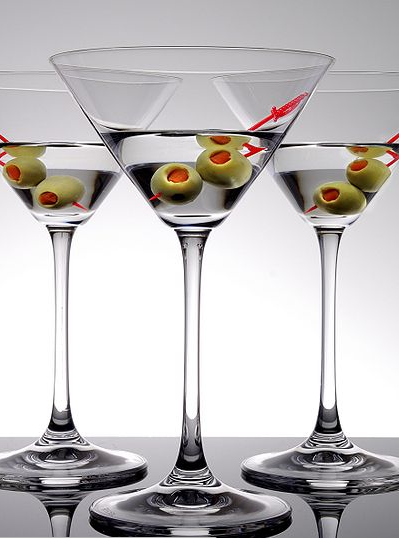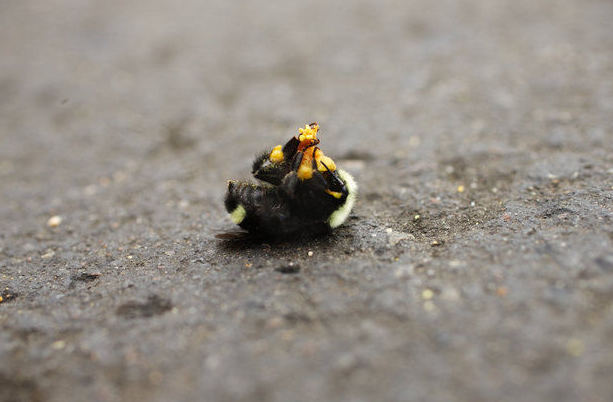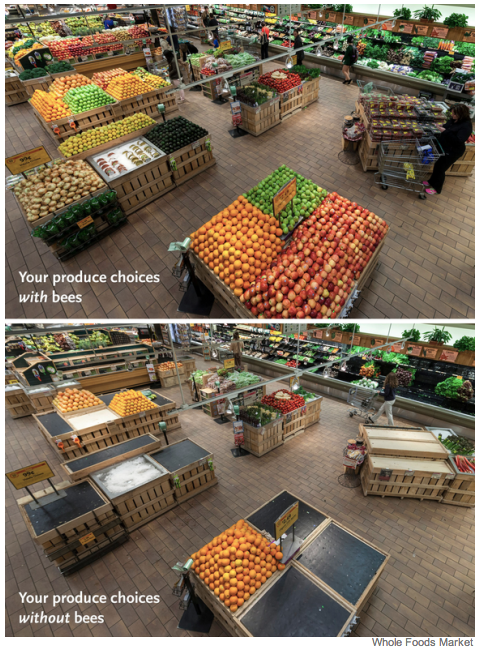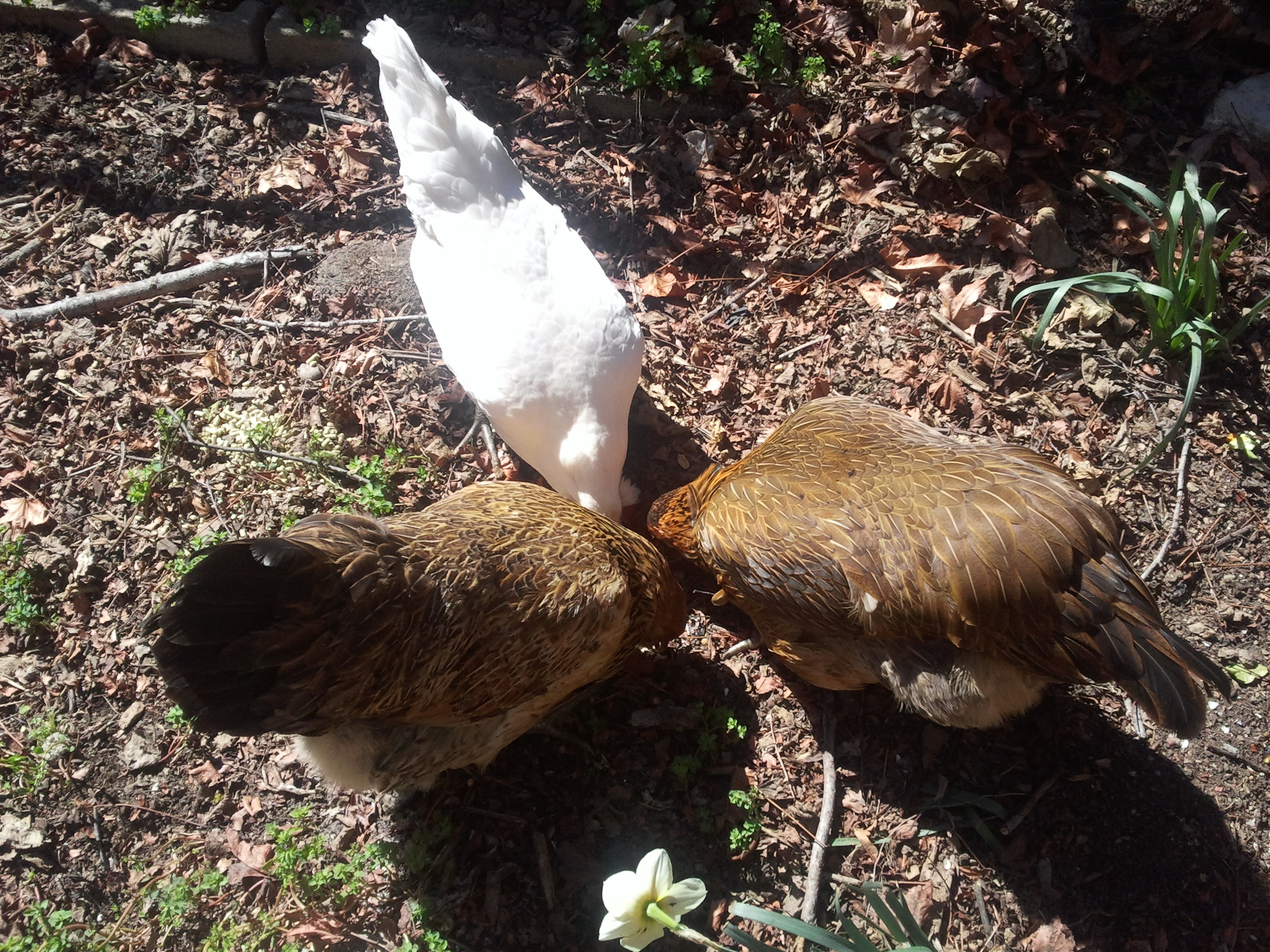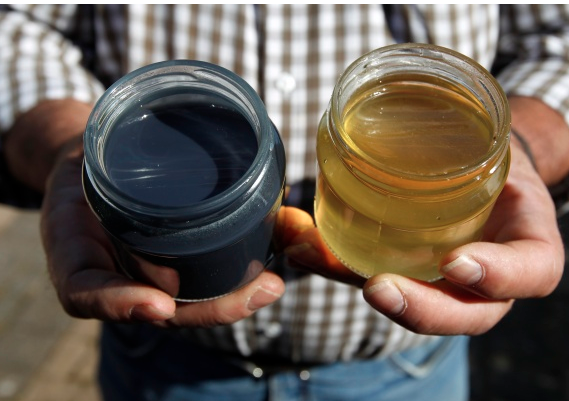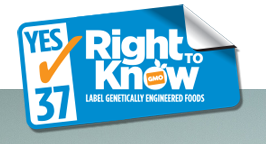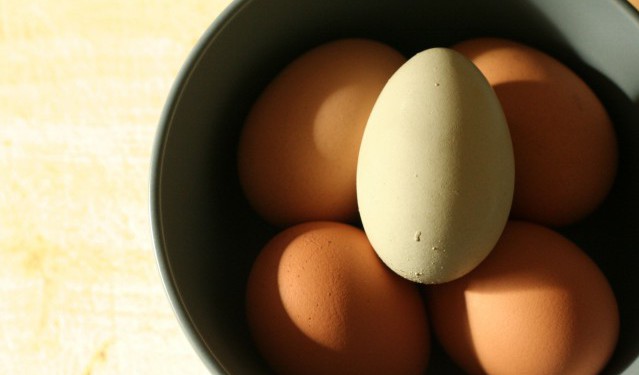Blog
The Bee Martini: Alcohol Tests for Varroa Mites
You're probably going to watch this video and think: What the heck? That beekeeper isn't wearing a bee suit! Why isn't he getting stung? And then you're going to think: Wait a second, why is he killing all those bees? Killing bees to save bees? WHAT IS GOING ON HERE??? Allow me to explain. This is Randy Oliver, pro-beekeeper, author of many articles in the American Bee Journal and posts on his website, ScientificBeekeeping.com. Randy is a respected beekeeper and scientist who has been keeping bees since 1967. His data collection has been instrumental to other researchers trying to understand CCD and honeybees in general, and when he's working on his commercial beekeeping, he spends his time reading scientific papers and interviewing scientists to disseminate the information to everyday beekeepers. Basically, he's awesome. So let's chat about the video and mite testing. Mites are a real problem for bees--they lower bees' immune systems and leave them susceptible to pathogens and disease. Beekeepers have to keep a constant check on mite levels to make sure their population isn't getting out of control. If you can manage your mite levels, chances are you'll have a pretty healthy hive. But if the mite populations spiral out of control, your bees could collapse in a matter of weeks or days. Most mite treatments are harmful if done proactively or on a large scale, so--like antibiotics or any other medicine--mite treatments are best applied in small amounts as needed. Knowing what's needed takes monitoring, and one method of monitoring is to conduct an alcohol test (i.e. one Bee Martini please, shaken not stirred). I don't want to explain the whole method, as Randy does a great job (with photos) on his blog here: http://scientificbeekeeping.com/sick-bees-part-11-mite-monitoring-methods/ But I'll do a quick outline here: Pull out a frame of brood (baby bees) Inspect the frame, make sure you don't have a queen on it. Remove her if you see her. Shake the frame into a Rubbermaid dish tub. Give time for older bees (who have less mites) to fly back to the hive. Scoop out a level half cup of bees--about 350 bees Pop those bees into a jar and then empty the jar into a sieve immersed in rubbing alcohol Shake them vigorously to dislodge mites (they are "swirled" in the video, but it's in a different contraption) Mites will fall off into alcohol--keep shaking until no more mites fall off Count mites. 6 or less is a good percentage of mites to bees. 7 or more and you should treat. Make sure you go super light on the vermouth. Now let's get to your questions: Why is he killing bees to save bees? Seems counter-intuitive. You've got about 30 to 50 thousand bees in a hive and bees live about 3 to 4 weeks, so every 30+ days you have a whole new set of bees. If mites take out your colony, you lose hundreds of dollars in time and money spent on a colony, not to mention 30 to 50K bees. This method kills 350 or so, but could save the rest of the colony. As Randy put it: when you get a blood sample to test for disease you don't cry over the blood cells you just lost--and this is the equivalent. Or,...
read morePesticides Kill Oregon Bumblebees
This story both deeply saddens me and gives me hope. For those of you who haven't heard, earlier this week a blanket of dead and dying bumblebees were found on a parking lot in Oregon. The estimated loss was around 50,000 bumblebees; other insects, such as honeybees, were killed as well. Customers found the bumblebees at the base of a group of European Linden trees, which had recently been sprayed with a pesticide called Safari--a neonicotinoid pesticide produced by Valent. After the mass die-off, researchers set out to find out if the culprit was the pesticide or the tree itself; apparently linden tree nectar can be toxic in high doses. As of Saturday, the Oregon State Department of Agriculture (ODA) announced that "the bee deaths are directly related to a pesticide application on the linden trees conducted last Saturday, June 15 to control aphids." (Link to ODA announcement here). Workers are now covering all the sprayed linden trees with insect-proof netting and officials are looking into the insecticide application to see if their was a legal violation. The pesticide's label gives clear warnings about its application: “This product is highly toxic to bees exposed to direct treatment or residues on blooming crops or weeds. Do not apply this product or allow it to drift to blooming crops or weeds if bees are visiting the treatment area.” What's even more intense is that neonics can persist in the plant and the soil for months or years, so it's hard to say just how long these trees will be toxic to local pollinators. Clearly, this is a depressing story, but here's what gives me hope: Government officials publicly admitted that a pesticide is killing bees. According to the Xerces society, this is the " largest mass poisoning of bumble bees ever documented." Bumblebee deaths happen all the time out in agricultural regions, but because this happened in an urban area, its visibility has been made the link impossible to ignore--and deny. We have definitive proof. Neonics have been one of the prime culprits in Colony Collapse Disorder. As you may have heard, the EU recently banned three neonicitinoid pesticides that affect honeybees. This bold move has received considerable backlash from Bayer and Syngenta and other US insecticide companies (read about Bayer and Syngenta lobbying "furiously" against EU efforts to ban their pesticides). The EPA has been notoriously reluctant to up their regulation of the pesticides--for reasons I won't speculate about here. We can only hope that this ecologically devastating event will bring more attention and increased funding to review these pesticides with a more critical eye. For now--we'll have to wait and see what happens. But here's how you can help: Educate yourself on websites researching and advocating around pesticide issues, like Xerces and PANNA (Pesticide Action Network in North America) Get involved as a Citizen Scientist with Xerces! Don't use pesticides in your garden, but if you need to, check out products that use Neem Oil or check out this comprehensive list from PANNA for alternatives: http://www.panna.org/your-health/home-pets-garden Plant bee-friendly flowers and plants in your garden--make a bee haven for all pollinators to enjoy! Then add your haven to this cool map here: http://www.honeybeehaven.org/ Get more ideas here at PANNA: http://www.panna.org/get-involved/what-you-can-do For more info: Read a summary of research on Neonics' impact on bees at the Xerces Society website: http://www.xerces.org/neonicotinoids-and-bees/# Video from...
read moreOur Supermarkets without Bees
People often ask me what will happen if all the bees die. Whole Foods (as part of their "Share the Buzz" campaign) recently posted a great photo (below) to illustrate this visually, since it's quite hard to really comprehend the role that bees play in our agriculture. I find the photo rather haunting. When people ask about dying bees, they usually mean honeybees. But the truth is, many pollinators are responsible for the fruits in the photos, not just honeybees. And those pollinators are being affected by some of the same causes that are impacting honeybees: mites, pesticides, diseases, and lack of habitat and nutritional variety (i.e. not enough flowers). A recent devastating bumblebee die-off in Oregon (over 25,000 bumblebees were found dead in a mall parking lot) has led to research on pesticides that might have been involved. Regardless of the cause, it's clear that not just honeybees, but wild bees and other pollinators (birds, bats, and other insects) are in need of our help and protection. If you'd like to find out more about what you can do and what's being done to help ALL pollinators, here are a couple organizations you should check out: Pollinator Partnership: http://www.pollinator.org/index.html The Xerces Society: http://www.xerces.org/pollinator-conservation/organic-farms/ Photo Source:...
read moreBackyard Farming Update Part 1: How We Got Our Chickens
I was just reading the post I wrote at the end of April in 2012 (over a year ago--mon dieu!) and realized I hadn't written an update on my backyard farm dreams. Basically, my three goals were to: convert the dirt into a fall garden, get bees, and get more chickens--all of which have come true. I thought it might be fun to share how each little dream came true. As the title suggests, this post will be about... The Hens It all started a few months ago. Henrietta was hanging out in her hen house, huddled up against the wall to fight the foggy winter cold. I felt bad for her; chickens are flock animals and very social. They constantly communicate with each other with little clucks and pecks, and keep each other warm at night in hen house. Since Henrietta had been on her own since I met her, I didn't realize that her solitude might be taking a toll on her. But then she stopped laying in September or October, and we still hadn't gotten eggs by January and February. The owner of the property, we'll call him R, and I chatted about getting more hens, but neither of us was sure we wanted the extra work. We were also nervous about introducing new hens to Henrietta--afraid they might have diseases that could kill her or that Henrietta could peck the other girls to death (she's a sassy lady). But I began to wonder if she might die soon--either from disease or because she was depressed. One day, I saw a dog carrier next to the shed and opened up the hen house. Three chickens were staring back at me. Two new and smaller hens were huddled together on the rafter roost, and Henrietta was at chest height, staring at me with her "What the hell is this crap?" expression, clucking with irritation. The other two kept shifting from one foot to the other, then walking down the roost and staring at each other, then me, then Henrietta. She shot an angry glance up at them from time to time that sent them to the corner, feathers shivering. I had no idea how the chickens had gotten there. I shut the coop--I decided to let them fend for themselves--and went for a walk. Robert--the owner--almost drove by me until I waved him down. "Did you see the chickens?" he grinned. A friend had given them to him. "I hope Henrietta doesn't kill them," I said. We both knew she was the only one that survived the last batch of chickens that had been there before me--and that says something about her ruthlessness (basically, it says she's ruthless). The next few days were touch and go. Henrietta would prowl the chicken run and the other two chickens stayed up in the roost, terrified. If the ladies tried to come down from their roost, Henrietta would squawk at them or chase them back into the hen house. I had to feed the girls on a ledge at the top of the hen house for days. Ruthie came down by the end of the week and endured a bunch of hen pecking--her little neck has finally grown back all its feathers, but it took almost a month. Beatrice took almost...
read moreSacrebleu! French Honeybees Produce Mysterious Blue Honey
This is why I adore bees. According to a Time article in October, French beekeepers started finding blue and green honey in their bees' honeycomb and were completely baffled as to why. As amazing as this story is, I have to feel bad for those French apiarists, who have been struggling to survive Colony Collapse Disorder (CCD) since 2007 and fighting the French government to ban the imidacloprid insecticide, a possible culprit. On top of that, the region suffered from a particularly harsh winter that resulted in low honey production. And then suddenly, out of nowhere, they open up their hives, pull out their frames, and this is what they find: Quelle horreur! or...better yet: Sacrebleu! Okay, sorry to make fun of the situation, because this had a serious impact on French farmers, but...you'll never guess why the bees are producing blue honey. It's not a virus, it's not a strange disease, it's not a GM blue flower, oh no, it's... M&M's. Apparently a Mars processing plant located 2.5 miles away from where the hives were located was processing waste from M&M factories. Because the M&M shells were exposed to the open air and the previous heavy winter had resulted in a loss of nectar, these resourceful bees found the M&M waste sugar source, gobbled it up, and produced the strange blue and green syrup that the beekeepers found in their hives. The downside is that French beekeepers cannot sell this honey because, technically, it isn't honey. According to a French law, honey must come from plant nectar and conform to a standard color. Once the community figured out the source of the problem, the factory agreed to clean out the open vats and store the M&M waste indoors. But you can't help but appreciate the weird factor of this story, and admire the bees' pluckiness to harvest whatever food they can find. I can't imagine this tagline will ever catch on, but here's to hoping: M&M's: They melt in your honeycomb, not in your hand. Check out more photos in this National Geo article on the topic. Sources: Reuter's: http://www.reuters.com/article/2012/10/04/us-france-bees-idUSBRE8930MQ20121004 Time: http://newsfeed.time.com/2012/10/05/french-bees-produce-blue-honey/ National Geographic: Link above...
read moreWhy I’m voting Yes on Prop 37
In some ways, it just seems obvious: Why shouldn't we have the right to know what's in our food? We have the right to know how much fat's in our food, how much sugar, and what the other ingredients are...so why shouldn't we have the right to know if our food has GMO sources? While I have my own issues with the GM industry, it's easy to put those issues aside and vote yes for one simple reason: Consumers have the right to know what's in their food, period. But let's break this down a bit and look at this issue more deeply. First of all, why aren't GM products labeled in the first place? The short answer is because the FDA does not currently require it. In a controversial move in 2009, Obama placed former Monsanto Public Policy VP, Michael Taylor, as the Deputy Commissioner for the FDA. During the 80's, under the Bush and Reagan administrations, FDA policy regarding GE regulation generally supported the emerging biotech industry while trying to create as little burdensome government regulation possible. In order to support this, in 1992 the FDA categorized GMO food as a "food additive," which is subject to two forms of regulation. One form of regulation involves toxicological testing--this is especially for products with synthetic chemicals. The other type of regulation is a designation called "GRAS," generally recognized as safe, which is how most GM products are categorized. This means, essentially, that as long as Monsanto SAYS its products are safe, the FDA will sign off on them. Michael Taylor oversaw the drafting of that 1992 policy. But one would assume that Monsanto would do human testing on its food products, right? To make sure that they're safe...right? Unfortunately, no. On the Monsanto website, under their "Why aren't you running human clinical trials on GM crops?"Monsanto basically says: We don't need to run human trials because GM crops are just as safe as conventional products. Why? BECAUSE WE SAY SO. Here's the actual quote: There is no need for, or value in testing the safety of GM foods in humans. So long as the introduced protein is determined safe, food from GM crops determined to be substantially equivalent is not expected to pose any health risks. Further, it is impossible to design a long-term safety test in humans, which would require, for example, intake of large amounts of a particular GM product over a very large portion of the human life span. There is simply no practical way to learn anything via human studies of whole foods. This is why no existing food--conventional or GM--or food ingredient/additive has been subjected to this type of testing. As this article comments, "Note the circular logic: Because no long-term epidemiological studies are in place, we have no evidence showing long-term harm. And since we don’t have any evidence of long-term harm, we don’t need studies to look for it."So basically, Monsanto doesn't conduct human studies of its products, and the FDA thinks that's just fine. Interestingly enough, this 1992 policy was passed even as many scientists within the FDA voiced their strong dissent. What was the government thinking when it pushed dissenters aside in blind support of bio-technology? Dan Glickman, the US Secretary of Agriculture under President Clinton, offers this insight about the...
read moreStarting My Backyard Farm
It all started with a chicken. She didn't have a name when my landlord asked if I'd help take care of her over the summer. My landlord had no idea that I have a chicken fetish and that my secret dream was to live in Berkeley and have chickens. Notice the past tense: My secret dream "was." Now it has come true. Meet Henrietta. In all honesty, I'm not totally sure what breed she is. I'm pretty sure she's an Auraucana, but she could be an Ameraucana--I'm not the only one who finds the delineation baffling--and she lays gorgeous little blue-green eggs. But either way, she's an Easter Egger, a chicken that possesses the "blue egg gene." And most importantly, she's my inspiration for my Backyard Farm project, which I'm trying to get in place before grad school fully kicks in. Urban farming is no new concept, but I'm excited to jump on the bandwagon. Henrietta's chicken run hugs a triangular piece of land behind a property and here are my plans for it: 1. I'm hoping to convert the dirt triangle into a fall garden. Henrietta needs some greenery around her, ya know? 2. I'd really love to finally get back on the beekeeping bandwagon and set up a bee hive back there as well. 3. Finally--and this is super exciting--I'd like to have a couple more chickens in the chicken coop to keep Henrietta company. It's tricky business to add new chickens to an existing flock, but I'm hoping that just adding one chicken or two might not be too difficult...thoughts on this? I'm super excited to take a backyard farming course here and there at BioFuel Oasis, which not only sells biodiesel, but also offers workshops in beekeeping and keeping chickens. It's time to make my backyard farming dreams come true. Tell me about your own adventures! What's in your backyard? How'd you get started? p.s. Note which (photo) came first: The chicken. Now you know....
read moreMission District Tour
My students and I recently went on a tour of the San Francisco Mission District with Edible Excursions. Check out some photos from our adventures below. Write-up coming soon! [Show as...
read moreRecent Photos from Chinatown Tour
Here are some recent photos from our field trip to Chinatown. I'm teaching a course titled: Eat Your Words, Adventures in Food Writing for the Epicurious. (See description here and check out our class blog here.) We'll go on three food tours altogether, one to Chinatown, one to the Mission District (tomorrow!), and one to the Gourmet Ghetto in Berkeley. I highly recommend checking out our Chinatown tour company Wok Wiz Tours. You can read a write-up I wrote last year of our tour here. It was fantastic. Enjoy the photos! [Show as slideshow]...
read moreSo you want to be a food writer?
Of course, I don't want to discourage you. But it's good to know what kind of world you'd be getting into before you make elaborate plans to spend your life savings on a website and six months hacking away at your computer while photographing and blogging about your gourmet lunches. To give you a more complete picture, check out this video here (it's just a couple minutes and it's SO fantastic!). And check out these blog posts written by one of our guest speakers, Sarah Henry, writer for the blog Lettuce Eat Kale: Will Write for Food and So you Want to be a Successful Food Writer? Here's how. And here's a video by Lauren Lipton called "Adventures in Food Writing." A...
read more
